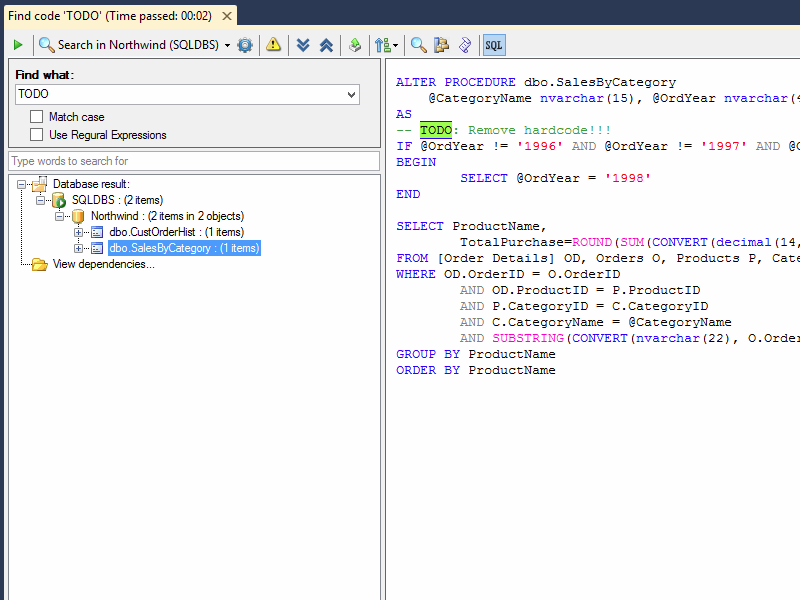Useful extension for SQL Server Management Studio
Good day, dear readers!
This post will be interesting to those who use SQL Server Management Studio (SSMS) when working with SQL Server.
It's about expanding SQL Refactor Studio for SSMS.
This extension can significantly save time on daily routine operations.
So, we begin to consider the functions most demanded in my opinion:
Hope the review was helpful.
If you find any other useful functions, I will try to supplement the article.
Thanks for attention.
This post will be interesting to those who use SQL Server Management Studio (SSMS) when working with SQL Server.
It's about expanding SQL Refactor Studio for SSMS.
This extension can significantly save time on daily routine operations.
So, we begin to consider the functions most demanded in my opinion:
- The sum of the selected cells in the grid. Killer feature for those who constantly work with numbers. Previously, I had to copy the contents of the grid to Excel and already work with it. Now it’s enough for me to select the necessary cells in the grid, and the studio will find them SUM, MIN, MAX and AVG.

- Getting the script object. While in the query editor, place the cursor on the name of the object and press F2 to get the script in a new window (or Ctrl + F2 to get the script in the same window). Previously, for this, it was necessary to search for the desired object in ObjectExplorer and form its script.
- Generating SELECT based on data in the clipboard. Suppose you need to quickly load a plate from Excel (Access) into the database. Of course, DTS, bcp, OPENROWSET and the manual formation of a script in Excel has not been canceled. But we need it faster and easier;). Therefore, we copy the data from the source to the clipboard and, using RMB in the query editor, select "Generate SELECT ..". Next, we add the generated query to SELECT INTO or INSERT INTO.

- Search for dependencies. A good alternative to the standard Dependency Viewer.
From the pros:- Finds dependencies that the native viewer does not find
- Search multiple databases
- Ability to view object scripts
- Lots of options and features

- Search for text. Suppose you create procedures / views in which you leave TODO notes and then want to find them all. In ObjectExplorer, select the database, on the PCM select the item "SQL Refactor Studio -> Find code", drive in the text that we want to find and start the search.
From the pros:- Supports regular expressions
- Search multiple databases
- Ability to search files on disk
- Lots of options and features

- Rename objects. Allows you to safely rename the database object, taking into account all the dependencies.
- Data search. Lets you find data among tables.

- Various refactorings. Add CRUD Methods , Introduce Trigger for History , Add Lookup Table , Move Columns
- Generating an INSERT script based on table data .
Hope the review was helpful.
If you find any other useful functions, I will try to supplement the article.
Thanks for attention.
